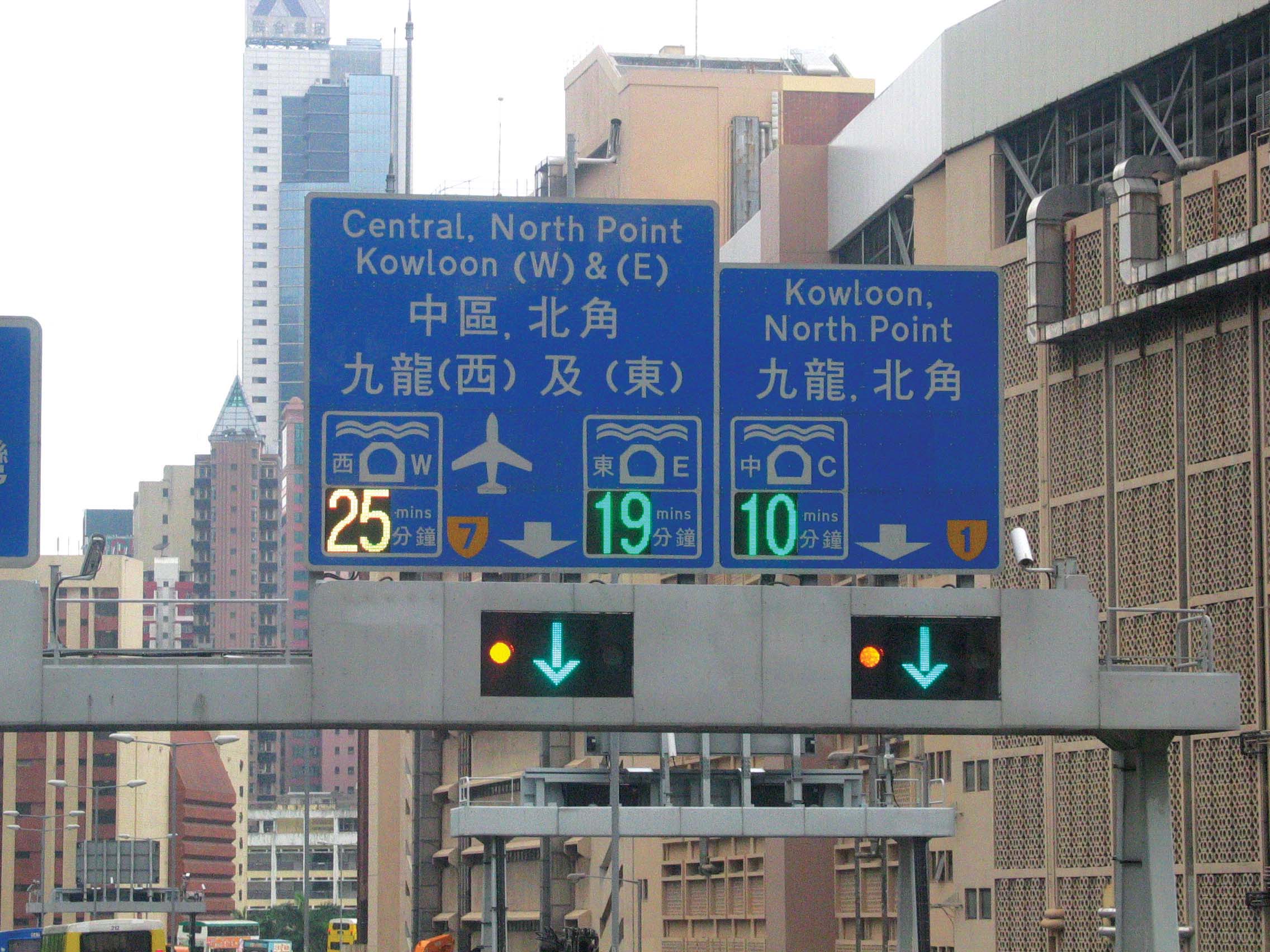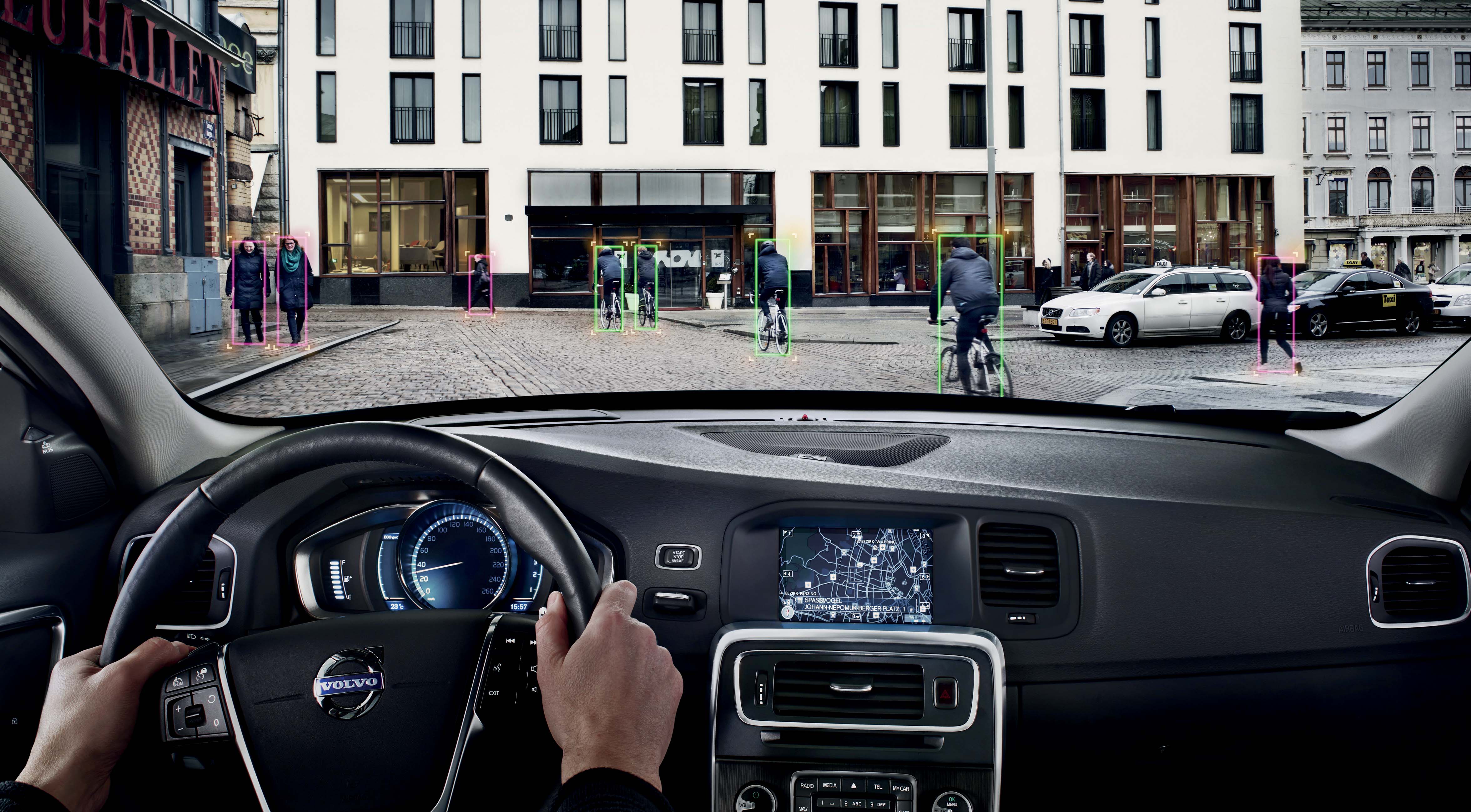The Asia-Pacific ITS Forum and Exhibition in Auckland, New Zealand, provided a focus for the region’s ITS Associations. Mary Bell reports. In late April, ITS New Zealand hosted the 13th Asia-Pacific ITS Forum and Exhibition in Auckland. Around 350 delegates from 24 nations gathered to share and advance ITS applications on both strategic and technical levels and to discuss the differing and various challenges faced in the region.

Variable road signs indicate travel times to cross the Aberdeen tunnel in Hong Kong.
The Asia-Pacific ITS Forum and Exhibition in Auckland, New Zealand, provided a focus for the region’s ITS Associations. Mary Bell reports.
In late April, ITS New Zealand hosted the 13th Asia-Pacific ITS Forum and Exhibition in Auckland. Around 350 delegates from 24 nations gathered to share and advance ITS applications on both strategic and technical levels and to discuss the differing and various challenges faced in the region.
Auckland itself is a rapidly growing city, dealing with congestion issues and limited traditional funding sources. Its 1.5 million population is expected to swell by an additional million residents in the coming 30 years and while significant efforts have been made to integrate the city’s transport system into a single, multimodal system, the level of investment needed to cope with Auckland’s growth is considerable. Kiwi delegates were eager to hear the ideas, research and results from their contemporaries in Asia, Australia and throughout the world.
Delegates to the policy and strategy session heard updates from Singapore, Korea, China, Thailand, Japan and Hong Kong.
Many of these countries began implementing ITS more than 20 years ago and share the goals of better efficiency and improved safety. However, each country has a different focus relating to its particular demographics. Compare the small and sophisticated islands of Singapore and Japan against the rapidly developing countries of China and Korea. Or the fact that Thailand’s public is heavily car-dependant versus Hong Kong where 90% of people use public transport.
In Singapore, supply-side optimisation is very advanced. Dr Kian-Keong Chin, group director of Singapore’s Land Transport Authority, said the country’s early strategies were all about efficiency and safety, however in recent times this strategy has started to evolve. “You can only make a corridor so efficient,” he said. So authorities have now started influencing behaviours. The country’s strategy is evolving towards demand-side management – providing information to drivers on delays and incidents and possible alternative routes.
Singapore has been a leader in demand-side optimisation for many years and was first to introduce congestion charging. Dr Chin said that what is needed for success is good sensing information, good analysis of the data, and intervention, in order that drivers can make informed decisions.
In Thailand there is to be a big focus on the development of the public transport subway in the coming years. Dr Passakon Prathombutr, president of ITS Thailand, said the Thai population is more familiar with cars and motorcycles than rail transport, which causes its own problems. Factor in a population of 67 million, with 10 million in Bangkok alone, you begin to understand the scale of the challenge faced by transport authorities there. Dr Prathombutr said the master plan includes not only enhancements to public transport but improving road safety, emergency response times and traffic flows.
One particular success Thailand’s law enforcement is enjoying is the introduction of dummy cops with intelligent sensors. In one example a mannequin holding a camera proved very effective in transforming chaotic traffic into an orderly queue. In addition, said Dr Prathombutr, “it’s impossible to bribe a dummy”.
He told delegates that Thailand doesn’t have good traffic infrastructure but it does have excellent social media use amongst the public.
The plan is to use existing technology to advance ITS with a big focus on smart-phones and social media. Key to this is a standard, open service platform, and to get telecommunications regulators and providers involved in testing and evaluation.
Thailand also needs a common framework and roadmap for ITS, something sorely lacking at present.
In Japan the focus is to use ITS to reduce traffic fatalities to fewer than 2,500 per year by 2018 and greatly reduce congestion by 2020. Last year saw 629,021 road crashes resulting in 4,373 deaths, mainly due to careless driving – namely collisions while turning right and crossing collisions, said Shin Morishita, director of Japan’s Ministry of Internal Affairs and Communications.
Japan’s solution lies in a driving safety support system, utilising onboard radars and self-sensing cameras.
Like many other nations, Japan’s government recently switched TV from analogue to digital, thereby freeing up various bandwidths. The authorities have allocated the 700MHz bandwidth for a driving safety support system that aims to reduce collisions between cars, motorcycles and pedestrians at crossings and intersections, especially where there are blind spots created by buildings and large vehicles. Roadside sensors will detect objects and notify nearby drivers (with a beep) via the 700MHz radio frequency to ensure safety. A study of applications, security and interoperability is currently underway.
Also in development is a new high-resolution in-car radar that uses 4GHz of bandwidth in the 77-81GHz range for the detection of pedestrians and bikes, even at high speeds. It offers higher resolution and increased range for detecting potential accidents.
Japan has allocated 50 billion yen in 2014 for a cross-ministerial strategic innovation promotion programme, which includes an autonomous cruising (automatic driving) system with technologies for accident avoidance and congestion alleviation.
In South Korea, the ongoing and dramatic increase in car ownership is causing huge problems with infrastructure, congestion and pollution, according to Yoo Jin Chang, ITS and Road Environment director at the Ministry of Land, Infrastructure and Transport.
The population of over 50 million people owns nearly 20 million cars and the costs of congestion have been rising by more than 8% per annum since the beginning of the new millennium.
Advanced signal control is already helping reduce congestion, electronic toll collection is saving fuel and waiting time for commuters, and automatic traffic enforcement has been implemented for signal, speeding and overload violations.
Korea’s focus for the next generation is on cooperative ITS (C-ITS) with the aim of preventing vehicle collisions and drastically reducing the number of road fatalities.
By way of contrast, Hong Kong is an island with very few cars; the population of 7.2 million has around 653,000 cars – less than one car for every 10 people. Public transport is used by 90% of residents and that translates to some 12 million passenger journeys per day.
Andrew Pickford, CEO of Transport Technology Consultants, Hong Kong, said because of the island’s small size there is an overlap in ITS with rail, marine and also mainland China.
ITS is well established in Hong Kong and continues to evolve. Traffic and traveller information empowers people with pre- and in-trip information and 95% of ATC junctions are equipped with ITS which has reduced travelling time by 30%. Traffic control and surveillance systems are routinely applied to new routes on the strategic road network and enforcement is seeing improved compliance with red light and speed cameras.
Pickford said planned investment in systems integration, data capture and information dissemination will fill the gaps in the current system. A traffic incident and monitoring system tender was issued in August last year and the winner will be announced shortly.
This will provide system-to-system links between the traffic control and surveillance systems and emergency services to improve the macro view of the road network. It will also provide automatic GIS display of congestion, affected public transport routes, alternative routes and the like, as well as using a Knowledge-Based Expert System to recommend incident response plans.
The traffic incident and monitoring system will also have automatic multi-channel news dissemination to government departments, transport service providers and road users.
A big challenge facing Hong Kong is the increase in cross-border traffic and goods, which will rise considerably once the 35km-long, six lane Hong Kong-Zhuhai-Macao Bridge connecting Hong Kong with mainland China is completed in 2016.
China has greatly contrasting demographics in comparison with its tiny neighbour: A huge land area, 26 provinces with many towns and cities and thousands upon thousands of miles of road. However, China’s economic surge has resulted in a massive increase in the number of private vehicles on its roads overwhelming the transport infrastructure.
Xiaojing Wang, director of the China National ITS Centre, told delegates that ITS has been developing in China over the last 20 years, with ITS deployed in major urban areas from 2006 and nationwide from 2010. The country currently boasts more than 6,000 ETC lanes in its national express network with more than 6 million users; a number expected to grow to over 10 million by the end of 2015.
A commercial vehicle monitoring system has integrated around 1,000 GPS service companies and currently has 1.6 million vehicles online. A smart bus system in a number of cities has bus rapid transit (BRT), along with smart dispatching systems, and collects fees from passengers using smart cards – more than 350 million of them!
Wang said China is working on a new national ITS development plan, which is to focus on improving efficiency and safety.
Key to this is the utilisation of new technology; namely the internet, mobile devices, cloud computing, big data management, communication and co-operative ITS. He said standardisation is very important to the success of the ITS plan, and central government is to provide support to technological innovation.
A Chinese ITS industry alliance was formally established last year with more than 120 members working together to create standards for the industry.
In late April, ITS New Zealand hosted the 13th Asia-Pacific ITS Forum and Exhibition in Auckland. Around 350 delegates from 24 nations gathered to share and advance ITS applications on both strategic and technical levels and to discuss the differing and various challenges faced in the region.
Auckland itself is a rapidly growing city, dealing with congestion issues and limited traditional funding sources. Its 1.5 million population is expected to swell by an additional million residents in the coming 30 years and while significant efforts have been made to integrate the city’s transport system into a single, multimodal system, the level of investment needed to cope with Auckland’s growth is considerable. Kiwi delegates were eager to hear the ideas, research and results from their contemporaries in Asia, Australia and throughout the world.
Delegates to the policy and strategy session heard updates from Singapore, Korea, China, Thailand, Japan and Hong Kong.
Many of these countries began implementing ITS more than 20 years ago and share the goals of better efficiency and improved safety. However, each country has a different focus relating to its particular demographics. Compare the small and sophisticated islands of Singapore and Japan against the rapidly developing countries of China and Korea. Or the fact that Thailand’s public is heavily car-dependant versus Hong Kong where 90% of people use public transport.
In Singapore, supply-side optimisation is very advanced. Dr Kian-Keong Chin, group director of Singapore’s Land Transport Authority, said the country’s early strategies were all about efficiency and safety, however in recent times this strategy has started to evolve. “You can only make a corridor so efficient,” he said. So authorities have now started influencing behaviours. The country’s strategy is evolving towards demand-side management – providing information to drivers on delays and incidents and possible alternative routes.
Singapore has been a leader in demand-side optimisation for many years and was first to introduce congestion charging. Dr Chin said that what is needed for success is good sensing information, good analysis of the data, and intervention, in order that drivers can make informed decisions.
In Thailand there is to be a big focus on the development of the public transport subway in the coming years. Dr Passakon Prathombutr, president of ITS Thailand, said the Thai population is more familiar with cars and motorcycles than rail transport, which causes its own problems. Factor in a population of 67 million, with 10 million in Bangkok alone, you begin to understand the scale of the challenge faced by transport authorities there. Dr Prathombutr said the master plan includes not only enhancements to public transport but improving road safety, emergency response times and traffic flows.
One particular success Thailand’s law enforcement is enjoying is the introduction of dummy cops with intelligent sensors. In one example a mannequin holding a camera proved very effective in transforming chaotic traffic into an orderly queue. In addition, said Dr Prathombutr, “it’s impossible to bribe a dummy”.
He told delegates that Thailand doesn’t have good traffic infrastructure but it does have excellent social media use amongst the public.
The plan is to use existing technology to advance ITS with a big focus on smart-phones and social media. Key to this is a standard, open service platform, and to get telecommunications regulators and providers involved in testing and evaluation.
Thailand also needs a common framework and roadmap for ITS, something sorely lacking at present.
In Japan the focus is to use ITS to reduce traffic fatalities to fewer than 2,500 per year by 2018 and greatly reduce congestion by 2020. Last year saw 629,021 road crashes resulting in 4,373 deaths, mainly due to careless driving – namely collisions while turning right and crossing collisions, said Shin Morishita, director of Japan’s Ministry of Internal Affairs and Communications.
Japan’s solution lies in a driving safety support system, utilising onboard radars and self-sensing cameras.
Like many other nations, Japan’s government recently switched TV from analogue to digital, thereby freeing up various bandwidths. The authorities have allocated the 700MHz bandwidth for a driving safety support system that aims to reduce collisions between cars, motorcycles and pedestrians at crossings and intersections, especially where there are blind spots created by buildings and large vehicles. Roadside sensors will detect objects and notify nearby drivers (with a beep) via the 700MHz radio frequency to ensure safety. A study of applications, security and interoperability is currently underway.
Also in development is a new high-resolution in-car radar that uses 4GHz of bandwidth in the 77-81GHz range for the detection of pedestrians and bikes, even at high speeds. It offers higher resolution and increased range for detecting potential accidents.
Japan has allocated 50 billion yen in 2014 for a cross-ministerial strategic innovation promotion programme, which includes an autonomous cruising (automatic driving) system with technologies for accident avoidance and congestion alleviation.
In South Korea, the ongoing and dramatic increase in car ownership is causing huge problems with infrastructure, congestion and pollution, according to Yoo Jin Chang, ITS and Road Environment director at the Ministry of Land, Infrastructure and Transport.
The population of over 50 million people owns nearly 20 million cars and the costs of congestion have been rising by more than 8% per annum since the beginning of the new millennium.
Advanced signal control is already helping reduce congestion, electronic toll collection is saving fuel and waiting time for commuters, and automatic traffic enforcement has been implemented for signal, speeding and overload violations.
Korea’s focus for the next generation is on cooperative ITS (C-ITS) with the aim of preventing vehicle collisions and drastically reducing the number of road fatalities.
By way of contrast, Hong Kong is an island with very few cars; the population of 7.2 million has around 653,000 cars – less than one car for every 10 people. Public transport is used by 90% of residents and that translates to some 12 million passenger journeys per day.
Andrew Pickford, CEO of Transport Technology Consultants, Hong Kong, said because of the island’s small size there is an overlap in ITS with rail, marine and also mainland China.
ITS is well established in Hong Kong and continues to evolve. Traffic and traveller information empowers people with pre- and in-trip information and 95% of ATC junctions are equipped with ITS which has reduced travelling time by 30%. Traffic control and surveillance systems are routinely applied to new routes on the strategic road network and enforcement is seeing improved compliance with red light and speed cameras.
Pickford said planned investment in systems integration, data capture and information dissemination will fill the gaps in the current system. A traffic incident and monitoring system tender was issued in August last year and the winner will be announced shortly.
This will provide system-to-system links between the traffic control and surveillance systems and emergency services to improve the macro view of the road network. It will also provide automatic GIS display of congestion, affected public transport routes, alternative routes and the like, as well as using a Knowledge-Based Expert System to recommend incident response plans.
The traffic incident and monitoring system will also have automatic multi-channel news dissemination to government departments, transport service providers and road users.
A big challenge facing Hong Kong is the increase in cross-border traffic and goods, which will rise considerably once the 35km-long, six lane Hong Kong-Zhuhai-Macao Bridge connecting Hong Kong with mainland China is completed in 2016.
China has greatly contrasting demographics in comparison with its tiny neighbour: A huge land area, 26 provinces with many towns and cities and thousands upon thousands of miles of road. However, China’s economic surge has resulted in a massive increase in the number of private vehicles on its roads overwhelming the transport infrastructure.
Xiaojing Wang, director of the China National ITS Centre, told delegates that ITS has been developing in China over the last 20 years, with ITS deployed in major urban areas from 2006 and nationwide from 2010. The country currently boasts more than 6,000 ETC lanes in its national express network with more than 6 million users; a number expected to grow to over 10 million by the end of 2015.
A commercial vehicle monitoring system has integrated around 1,000 GPS service companies and currently has 1.6 million vehicles online. A smart bus system in a number of cities has bus rapid transit (BRT), along with smart dispatching systems, and collects fees from passengers using smart cards – more than 350 million of them!
Wang said China is working on a new national ITS development plan, which is to focus on improving efficiency and safety.
Key to this is the utilisation of new technology; namely the internet, mobile devices, cloud computing, big data management, communication and co-operative ITS. He said standardisation is very important to the success of the ITS plan, and central government is to provide support to technological innovation.
A Chinese ITS industry alliance was formally established last year with more than 120 members working together to create standards for the industry.










